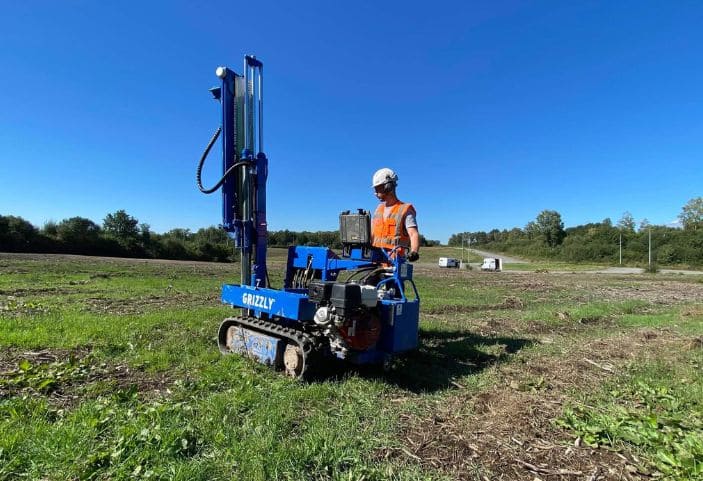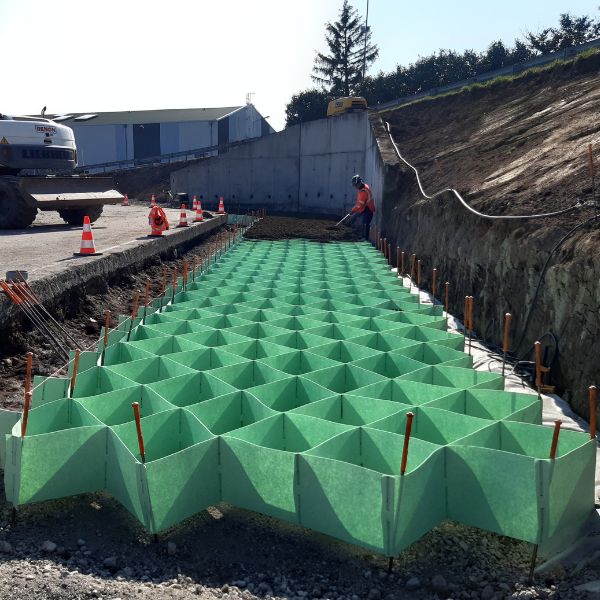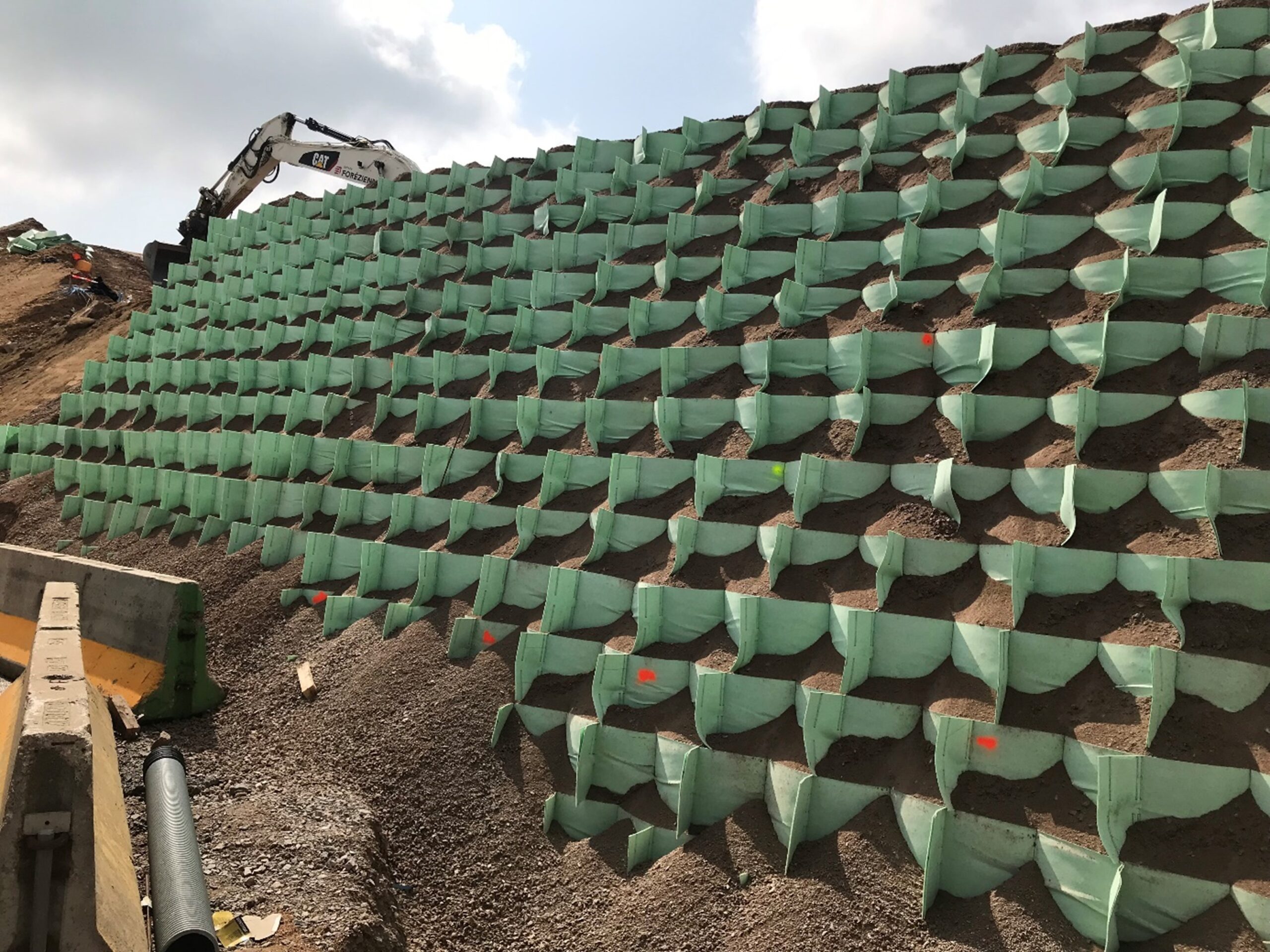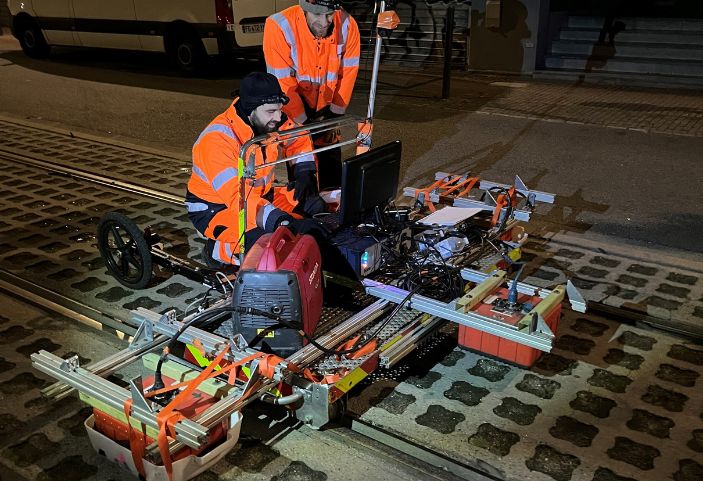Soil investigations
Soil studies (or geotechnical studies) are classified (G1/G2/G3/G4/G5) in a normative document (NF P 94-500) in order to define the technical level of the reports submitted to the customer.
Sol Solution assists its clients in all geotechnical missions from the preliminary project to the execution.
Sol Solution intervenes at all stages of the works from the preliminary project to the acceptance phase: choice of location, choice of foundation type, dimensioning of works, diagnosis, expertise, quality control, drought analysis, implementation prescriptions, monitoring and acceptance of foundations.
These assignments are often referred to as “soil investigations”, but their distinction makes it possible to provide a study adapted to the progress of the project. The most common mission is the G2 AVP (G2 Pre-Project), which allows the foundations to be pre-dimensioned (type and depth) on the basis of the projected plans of the structure.
The fields of intervention are multiple: buildings, individual houses, engineering structures, earthworks, roads, dykes, platforms, rocky slope stability, retaining structures, environment, soil pollution diagnosis (search for polluting elements),…
Sol Solution has the geotechnical skills for all the calculations with modelling calculation software (TALREN®, PLAXIS®, GEOSTAB®, K-REA®, FOXTA®…) which allows us to ensure the adequacy of the regulatory compliance of the project (EUROCODE 7 and 8).
Soil investigations Loi ELAN

The Elan law (2020) requires a G1 soil investigation to be carried out before the sale of a building plot and a G2 survey before the construction of a house, in order to reduce the risk of damage in areas sensitive to drought.
Are you selling a building plot in areas that are moderately or highly susceptible to clay shrinkage and swelling? You are obliged to provide the buyer with a G1 study.
Ask for a quoteWhat is the purpose of the G1 soil survey?
The G1 geotechnical study gives an overview of the geology of a site (sensitivity to drought, type of soil) and major geotechnical risks. Carried out before any project, it enables the type of foundations to be identified before buying a plot of land. It consists of two stages:
SIP Site Investigation Phase
This involves listing all existing documents and data relating to the site (bibliographical study) and then determining potential geological constraints. Sol Solution always carries out field tests on this type of mission.
General Construction Principles (GCP) phase.
This phase allows us to formulate the first geotechnical constraints following the field investigations and identify the first geotechnical risks.
Our service: Carrying out a bibliographical study, carrying out a geotechnical investigation program and laboratory tests for sensitivity to drought.
We provide you with a summary report integrating the geotechnical data collected at this stage and the general principles of possible foundation construction.
G2 soil investigations
G2 Pre-Project Phase
Do you need a soil investigation prior to the construction of a building?
The G2 AVP (pre-project) soil investigation provides you with geotechnical hypotheses to be taken into account at the pre-project stage, construction principles (type and dimensional outline of foundations).
Ask for a quote
Our service: Carrying out the geotechnical investigation program and laboratory tests, we provide you with a summary report with the choice and pre-dimensioning of the foundations (depth, bearing capacity of the soil).
Project phase G2 PRO
The G2 PRO soil investigation is carried out at the project stage of the project management: it specifies the choice of foundations and their final dimensions (for this mission, the plans and load descriptions must be transmitted).
Our service: Carrying out the geotechnical investigation and laboratory test program. We will provide you with a summary report with the choice and sizing of the foundations (depth, verification of the foundations according to the load descriptions).

G3 to G5 investigations
Sol Solution carries out all standard geotechnical assignments (NF P 94-500) from G1 to G5 (G1 ES/PGC, G2 AVP/PRO, G3, G4 and G5). Sol Solution can assist companies in G3 execution missions and project owners in G4 project management missions.
Sol Solution can carry out G5 geotechnical diagnoses, particularly following drought-related disasters.
Ask for a quote
Sol Solution’s soil investigation service is OPQIBI qualified (Qualified Engineering).

Support and bearing capacity studies

M3S® alveolar geotextile support
More than 30 years ago, Sol Solution set up the M3S® process: an innovative solution for soil reinforcement using alveolar geotextiles.
The M3S® process can be adapted to all types of soil, whether it is low bearing capacity soil or difficult to access areas. It allows the reuse of most of the time of the site’s excavated material or additional materials (natural or from a quarry).
Design of retaining walls
The M3S® process has over 30 years of geotechnical engineering and process development experience. We support you in all phases of your project, from design to execution.
Each project is subject to a permanent search for the most suitable technical solutions with controlled execution costs.
Working alongside the project managers and contractors, Sol Solution ensures
- The dimensioning of the works (in accordance with a G3 mission – NF P 94-500)
- The supply of M3S® alveolar sheets,
- The supply of the facing structures,
- On-site assistance to train the teams of companies in charge of the deployment,
- Monitoring and control of the execution of the work (load-bearing capacity checks at the bottom of the excavation, compaction checks, laboratory characterization of the materials, etc.).
Modelling
Sol Solution has all the skills inherent in a geotechnical design office. All calculations are carried out internally with modelling calculation software (TALREN®, PLAXIS®, GEOSTAB®, K-REA®…) which ensures the adequacy of the solution with the environmental and regulatory constraints of the project (EUROCODE 7 and 8).

Plate tests
Sol Solution intervenes on earthworks or building sites to carry out bearing capacity tests:
- Standardised tests with the laboratory type plate of Bridge and Roadway (EV1/EV2/Kw)
- Light dynamic plate tests
Geophysical studies
Sol Solution has several geophysical workshops to monitor the soil.
The methods used are :
- Georadar,
- Electromagnetism,
- Electrical measurements,
- Seismic measurements.

Ground-penetrating radar and electromagnetism are highly efficient methods that allow the monitoring of large linear structures such as dams and transport infrastructures. As a rule, however, these methods have a lower depth of investigation.
Electrical and seismic measurements are more time-consuming to implement, however, they allow the investigation of greater depths.
The results of these investigations are cross-sections that represent variations in the physical properties of the soil:
- variations in electrical properties obtained through georadar, electromagnetic and electrical measurements make it possible to locate soil fractures, voids, material thicknesses, singularities such as buried objects, leaks, etc.
- variations in mechanical properties (seismic velocity) detected by seismic measurements allow the detection of more or less compacted areas
Depending on the type of terrain and the nature of the object sought, different prospecting methods can be envisaged to characterise the subsoil.
The idea is to take advantage of the speed of execution of geophysical measurements and their capacity to monitor large areas to enable the judicious installation of soundings in order to optimise the reconnaissance of a site.
